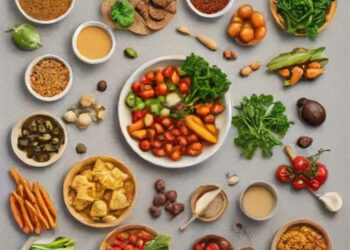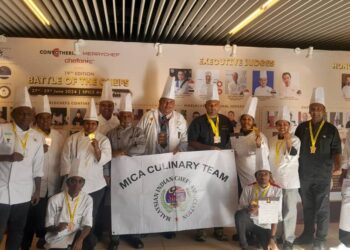
ADVERTISEMENT- This article is powered by FoodChain ID. For details, call Chinmayee Deulgaonkar- +91 99301 09209 | cdeulgaonkar@foodchainid.com
– Contributed by Chef Rehman Mujeebur
Chef Rehman Mujeebur has over 15+ years of experience in managing and modernizing Royal Cuisines of India (northwest frontier, Kashmiri, Mughal, Rampur, Awadhi, Hyderabadi). He maintains a proven track record of innovating new products and F&B concepts. He is also a restaurant consultant.
Every single person working in the Food Business incorporates a responsibility to self-understand on how one should move ahead with time, ensuring the norms are on point to let the spread of COVID-19 be the least possible.
Transmission of the Virus.
As there is no evidence by the health authorities of the virus being a food-borne transmission and it’s more of a chain reaction spreading through getting in contact with an infected person or objects.
Cooked Food is safe with the almost null risk of the coronavirus, however, that does not conclusively prove that packaging and delivering containing the food is safe.
Things to be considered while Re-Opening the Kitchen.
Prior and during the operations of the entire restaurant or even just the kitchen services, one should apply all the practical measures and sanitation to lower the risk of the spread while the place and work are in action.
Hygiene for the staff
Temperature and oxygen level checks at check-in and check-out of every staff must be done with proper pulse oxy-meter, and if ranges are not normal, must be immediately told to leave the premises and be put on medication.
The Chef or Manager should provide training and monitoring daily if the staff is compulsorily practising hygiene and following the procedural changes levied.
Especially the food handlers and stewarding staff must follow strict hygiene and social distancing norms as they are the ones who would meet or deliver the food to end customers. Few points to follow below:
Washing hands frequently when preparing foods, after going to the bathroom, after handling money or touching your face or hair
1. Avoid touching your eyes, mouth and nose
2. Avoid touching areas that have been in direct contact with service staff
3. Use of Sanitizer or soap after every activity must be compulsory and the management must make provisions for the same.
Also, in my context, washing or sanitizing our hands is more precautious than just wearing a glove over it.
Apart from handling ready to eat food, the use of gloves should be avoided if the person is healthy enough.
For staff using gloves, should wash hands or sanitizing it after removing or changing the gloves to ensure proper cleanliness of hands and prevent contamination from using gloves onto the fresh gloves.
Any worker suspecting symptoms like coughing, sneezing or even mild flu must be excluded from the workplace and be on medication on priority.
Hygiene in the kitchen area.
The kitchen area must be cleaned and sanitized by taking the following measures:
Every facility equipment must be sanitized after constant intervals.
Common surfaces like front doors, freezer handles, pickup counters etc must be deep-sanitized at least twice a day. Apart from sanitizing it twice, in case you think there could be contamination on it, a quick cleaning with basic household disinfectant should be done.
Food containers and every small and big cutlery must be washed and sanitized before and after use.
The disinfectant used must be of levelled quality and the one that claims to kill the virus’s contamination.
It is advisable to use Chlorine (bleach) contained Disinfectants for the kitchen areas and as per the instructions mentioned for usage and dilution.
Bleach Solutions for cleaning should be not stocked too much as it becomes less effective.
The recommended concentration for chlorine-based disinfectants is 1000 ppmm, that has proved to eradicate the majority of micro bacterial and viruses.
Hygiene while disposing of & reusing cutlery
There is no evidence proving that the use of disposable or single-use cutlery, crockery or containers is beneficial in context to health factors.
For full time operating restaurants & eateries, standard cutleries and containers can be continued to be used with absolute cleaning and sanitation processes on point.
For only food deliveries where onetime use containers are utilized, make sure the packaging is tight and perfect with no point of the food being littered out also ensure there is no unnecessary shared surface touching to avoid the risk of contamination.
Hygiene while handling the kitchen’s waste management
Sanitizers should be compulsorily placed near the areas where the kitchen waste is being disposed of.
One time use gloves and masks must be utilized by handlers while disposing of the waste.
Hands should be washed with soap and under running water immediately after handling these items
Consuming Frozen Food Products
The FSSAI has notified norms for the usage of frozen vegetables. As there has been a high demand for ready to cook and frozen food products by end-users as well. When it comes to restaurants for consuming frozen vegetables, meat etc, factors like stability of colour, flavors, the standard of hygiene must be adhered to before it is used in the kitchen.







